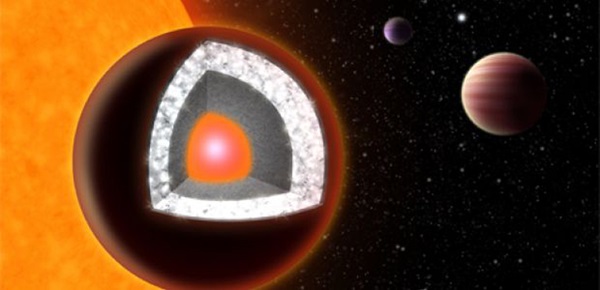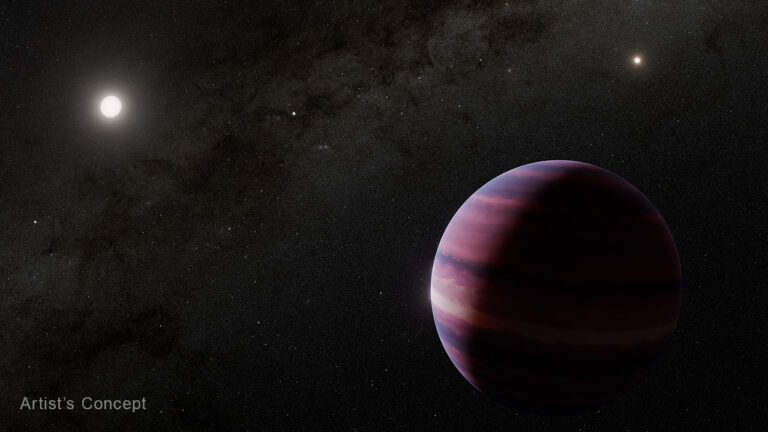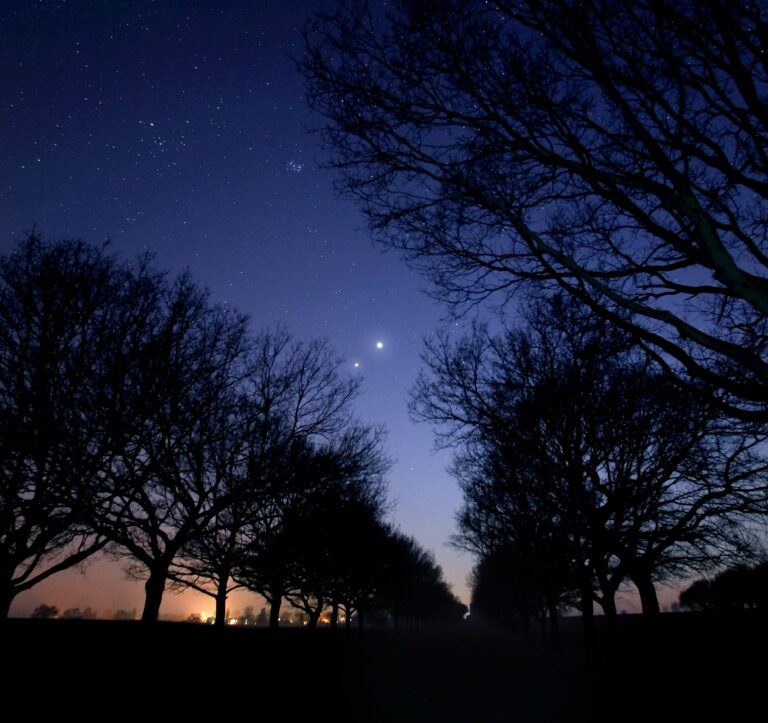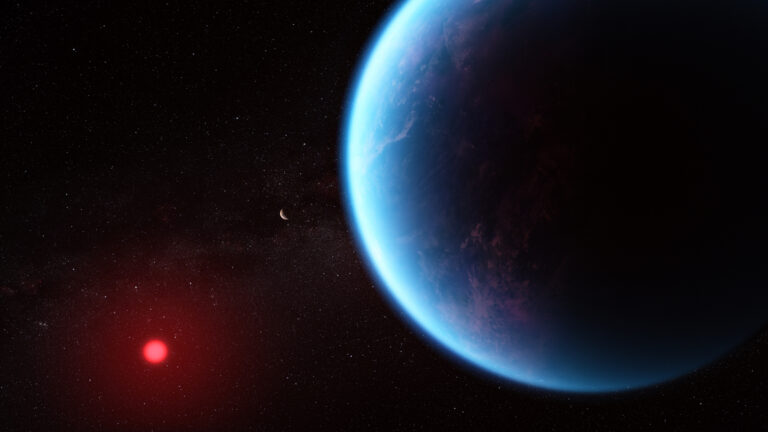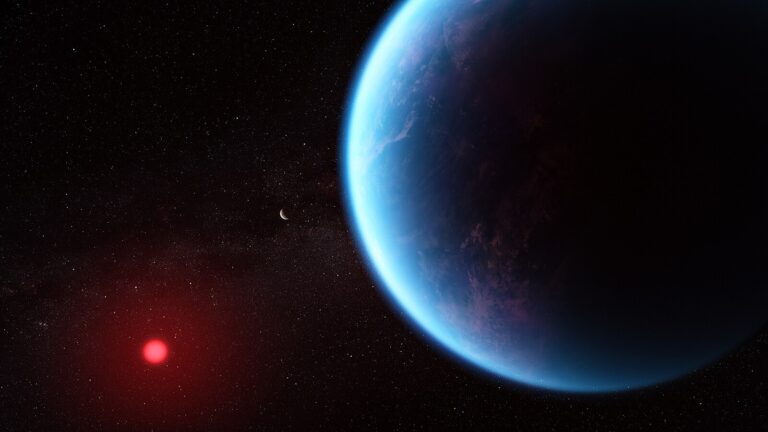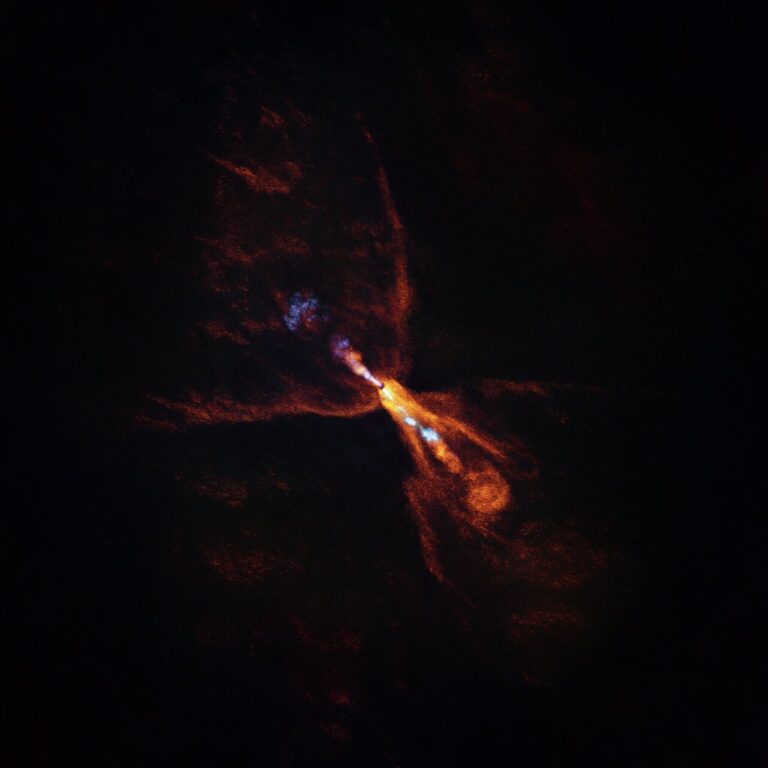Key Takeaways:
Revisiting public data from previous telescope observations, Teske’s team analyzed the available data on the exoplanets 55 Cancri e in more detail and concluded that carbon — the chemical element diamonds are made of — appears to be less abundant in relation to oxygen in the planet’s host star, and by extension, perhaps the planet, than was suggested by a study of the host star published in 2010.
“The 2010 paper found that 55 Cancri, a star that hosts five planets, has a carbon-to-oxygen ratio greater than one,” Teske said. “This observation helped motivate a paper last year about the innermost planet of the system, the ‘super-Earth’ 55 Cancri e. Using observations of the planet’s mass and radius to create models of its interior that assumed the same carbon-to-oxygen ratio of the star, the 2012 paper suggested the planet contains more carbon than oxygen.”
“However, our analysis makes this seem less likely because the host star doesn’t appear as carbon-rich as previously thought,” Teske said.
Observations obtained in 2010, together with simulations astronomers use to model a planet’s interior based on data like radius, mass, and orbital velocity, had yielded a carbon-to-oxygen ratio greater than one — in other words, an alien world based on carbon instead of oxygen as most planets are in our solar system, including Earth.
“The Sun only has about half as much carbon as oxygen, so a star or a planet with a higher ratio between the two elements, particularly a planet with more carbon than oxygen, is interesting and different from what we have in our solar system,” said Teske.
Based on the previous results, it was suggested that the “diamond planet” is a rocky world with a surface of graphite surrounding a thick layer of diamond instead of water and granite like Earth.
The new research by Teske and collaborators calls this conclusion in question, making it less likely a hypothetical space probe sent to sample the planet’s innards would dig up anything sparkling.
Teske’s group found that the planet’s host star contains almost 25 percent more oxygen than carbon, about midway between the Sun and what the previous study suggested.
“In theory, 55 Cancri e could still have a high carbon-to-oxygen ratio and be a diamond planet, but the host star does not have such a high ratio,” Teske said. “So in terms of the two building blocks of information used for the initial ‘diamond-planet’ proposal — the measurements of the exoplanet and the measurements of the star — the measurements of the star no longer verify that.”
A so-called super-Earth boasting about twice Earth’s diameter and eight times our world’s mass, the “diamond planet” is the smallest member of a five-planet system located in the constellation Cancer. 55 Cancri e races around its host star at such a close distance that one year lasts only 18 hours and its surface temperature is more than 3000° Fahrenheit (1600° Celsius).
“With rocky worlds like 55 Cancri e, researchers use measurements of a planet’s radius, mass, and density, and basic physical equations governing the internal structure of solid planets to calculate possible compositions of the planet’s interior,” Teske said.
“This planet is probably rocky or has a large rocky component,” she said. “We don’t really know if it has an atmosphere.”
Since astronomers can’t probe the makeups of stars and planets directly, they rely on indirect observational methods such as absorption spectra — each chemical element absorbs light at different wavelengths in a characteristic pattern that can be used as a fingerprint of that element. By analyzing the absorption spectra of starlight passing through a star’s atmosphere, it is possible to deduce what elements are present in the star’s atmosphere.
“Instead of using the same absorption lines in the spectrum of the host star as the previous study of 55 Cancri, we looked at more lines of carbon and more lines of oxygen,” Teske said. “We find that because this particular host star is cooler than our Sun and more metal-rich, the single oxygen line analyzed in the previous study to determine the star’s oxygen abundance is more prone to error.”
Teske, instead, relied on several different indicators of the oxygen abundance that were not considered previously. “Averaging all of these measurements together gives us a more complete picture of the oxygen abundance in the star.”
Teske pointed out that the “diamond planet” results hinge on the presumption that a star’s composition bears some relation to the composition of its planets, a notion grounded in the idea that planets form from the same material as their host stars. However, as astronomers discover more and more extrasolar systems, a one-size-fits-all formula becomes less likely.
“We still don’t know whether our solar system is common or uncommon in the universe,” Teske said, “because many of the systems that we are finding have giant gas planets closer to the star, unlike our system where rocky planets dominate the inner orbits and gas giants occur further out.”
There are so many processes, most of which are not fully understood, happening in a planet-forming disk that could influence the composition of planets. “At this point, I would honestly be surprised if there was a one-to-one correlation,” Teske said.
“The compositions of planets and stars don’t always match,” she said, explaining that in a swirling disk of dust and gas giving birth to a star and planets, “you can have pockets where there is a lot of water, meaning an enhancement of oxygen. Or places where water has frozen out, leaving behind carbon species as the dominant gas molecules. So the planets that are accreting gas at those locations in the disk could be more carbon-rich instead of oxygen-rich.”
Therefore, room for uncertainty remains, according to the researchers.
“Depending on where 55 Cancri e formed in the protoplanetary disk, its carbon-to-oxygen ratio could differ from that of the host star,” Teske said. “It could be higher or lower. But based on what we know at this point, 55 Cancri e is more of a ‘diamond in the rough.’”

